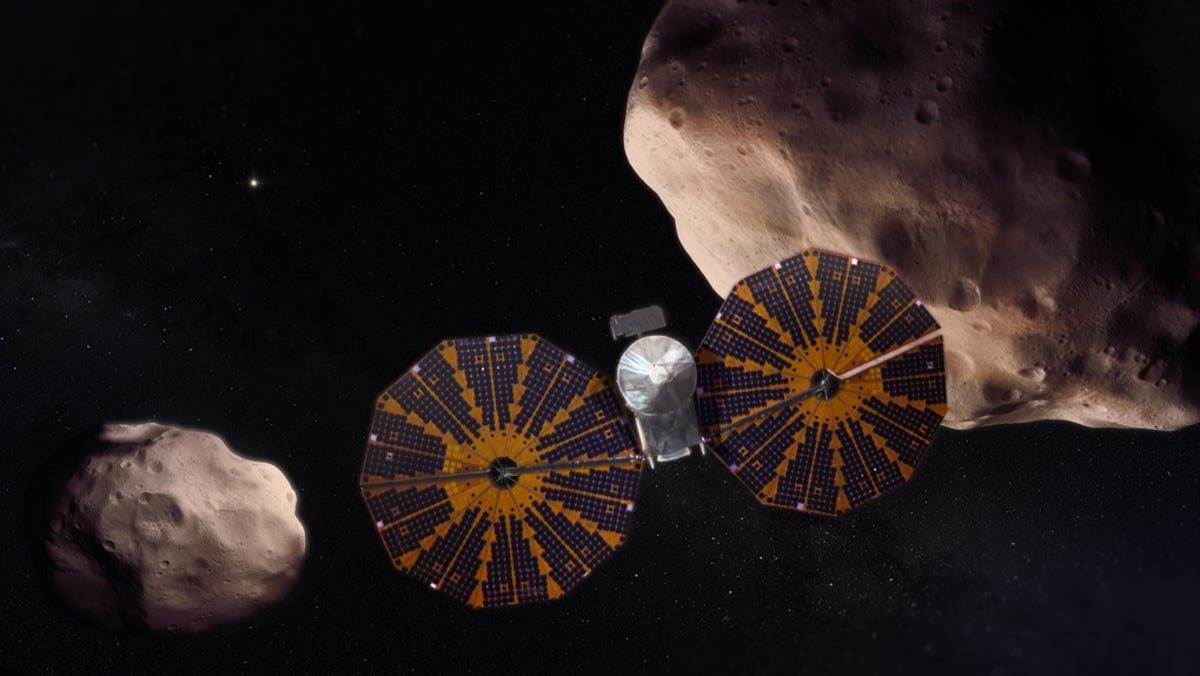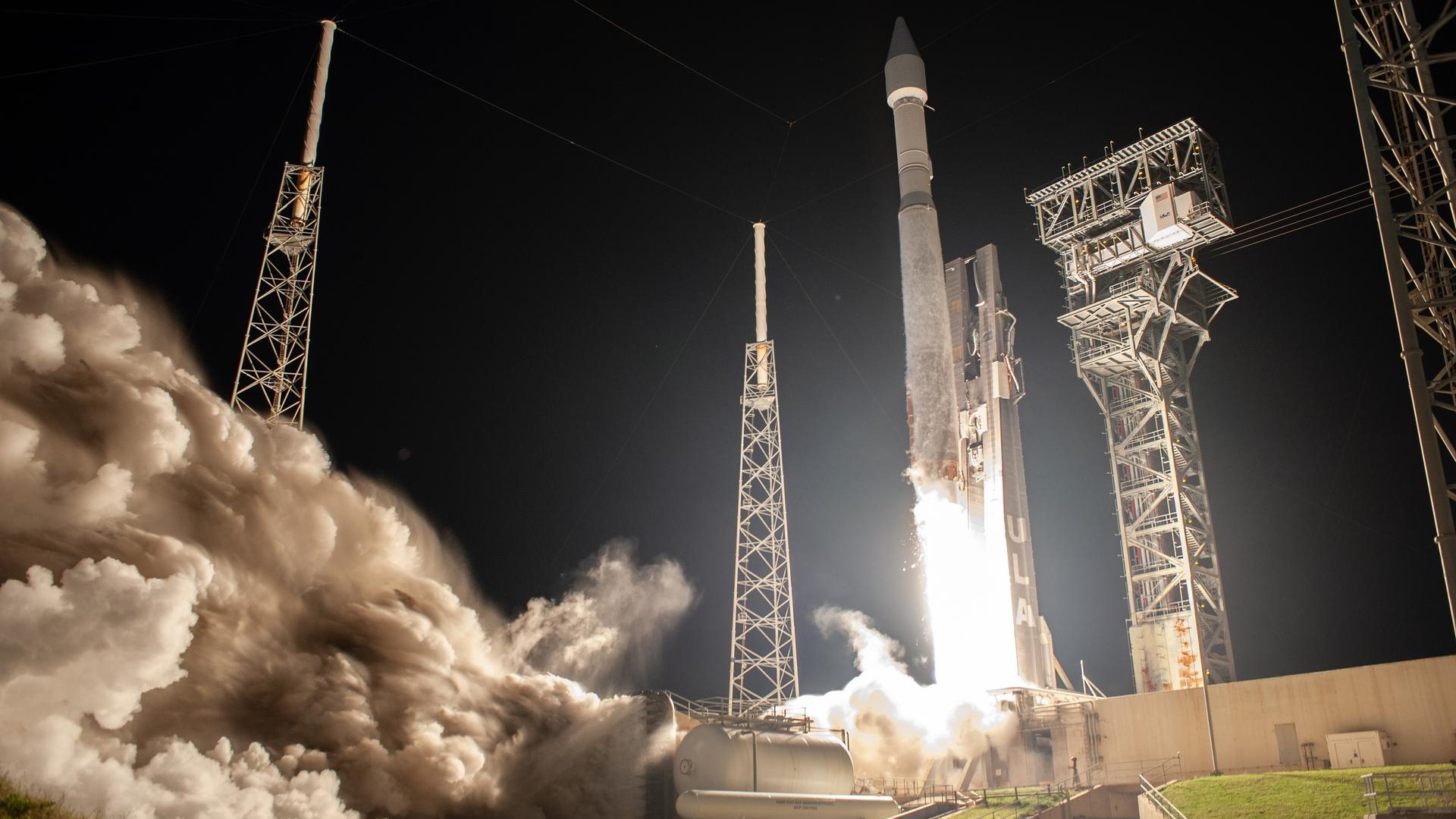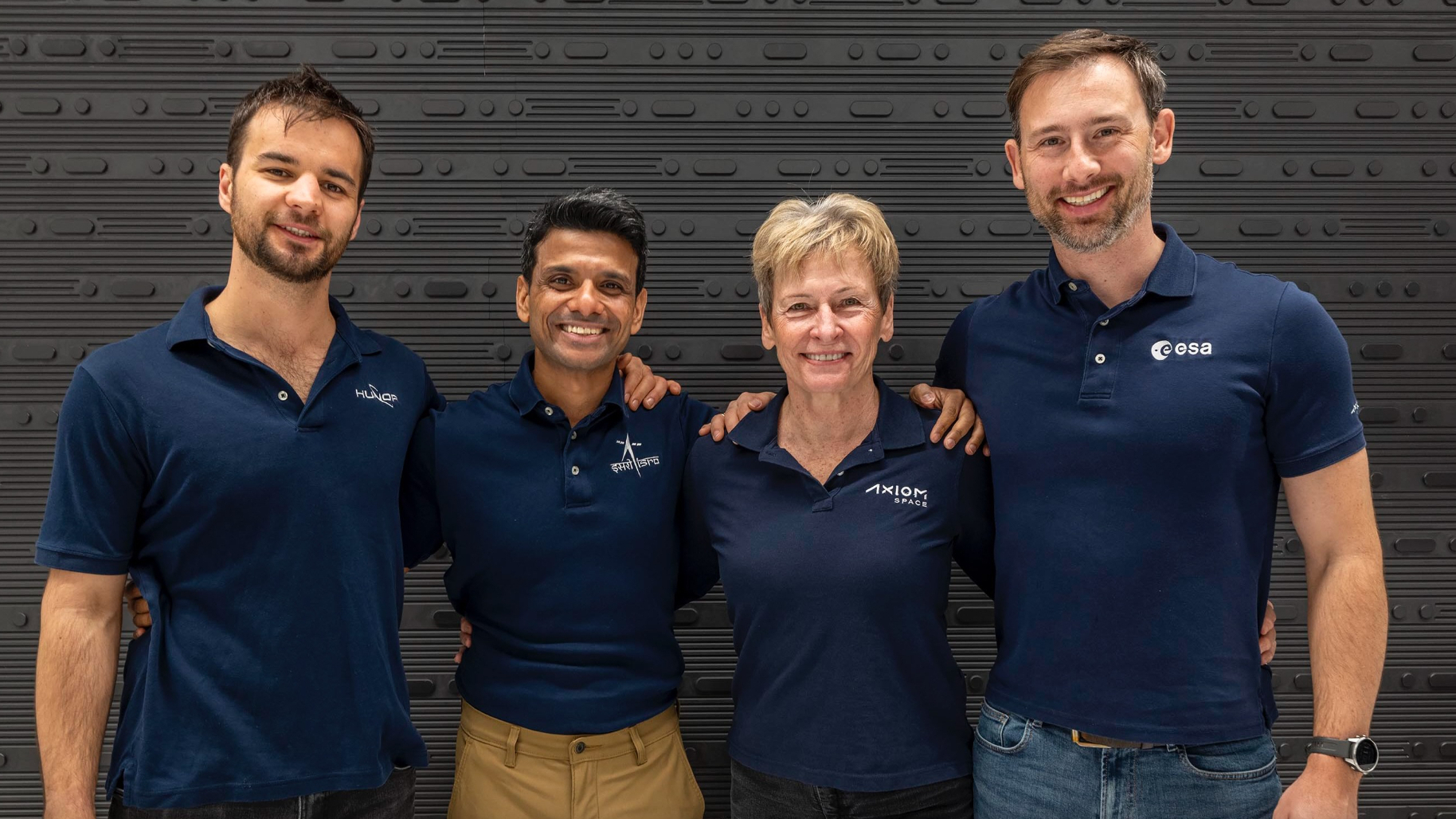Lucy mission: NASA's journey to the Trojan asteroids
NASA's Lucy mission is seeking cosmic fossils that could unlock the secrets of the early solar system.

The Lucy mission is a NASA probe that will explore a set of asteroids near Jupiter known as the Trojans. These ancient space rocks hold important clues to the creation of our solar system and, potentially, the origin of life on Earth. The Lucy mission was launched at 5:34 a.m. EDT (09:34 GMT) on Oct. 16, 2021 from the Kennedy Space Center atop a United Launch Alliance (ULA) Atlas V rocket.
– Launched: Oct.16, 2021 at 5:34 a.m. EDT (09:34 GMT)
– Launch site: Kennedy Space Center
–Rocket: United Launch Alliance (ULA) Atlas V rocket
– Target: The Trojan asteroids
– Estimated Cost: $981 million
– Arrival at first target: 2025
– Status: In progress
Along with a mission called Psyche, Lucy was approved in January 2017 as part of NASA's Discovery program, which supports focused and relatively cheap planetary missions. A year after approval, the mission was officially given a schedule and a set of seven asteroid targets; as time has passed that number has risen to 10.
Lucy is named for a famous female Australopithecus afarensis fossil found in Ethiopia that, as a relative of modern humans, helped illuminate the evolution of our species. It is hoped that the spacecraft Lucy will similarly elucidate our solar system's earliest days.
Related: The greatest asteroid missions of all time!
Lucy mission targets: The Trojan asteroids

The probe's main objects of study are the Trojan asteroids. These objects are thought to be remnants from the primordial disk that formed the sun and planets, which were captured by Jupiter's gravity sometime near the beginning of the solar system.
Lucy will be the first mission to visit the Trojans, which are each named for famous figures from the Trojan war in Greek mythology.
According to NASA, the Trojans share Jupiter's orbit around the sun in two loose groups, with one set slightly ahead of the gas giant and another behind it. "The Trojans are stabilized by the sun and its largest planet in a gravitational balancing act," the agency wrote.
Lucy's first target was added to the itinerary in January 2023: On Nov. 1, 2023, the spacecraft will fly within 280 miles (450 kilometers) of an asteroid known as 1999 VD57. The space rock is provisionally nicknamed Dinkinesh, a nod to the Ethiopian name for the Lucy fossil. The flyby will allow the mission team to practice using the spacecraft's unique target-tracking system before Trojan flybys begin.
The spacecraft will then make a quick flyby of a main belt asteroid in 2025. The small space rock is named 52246 Donaldjohanson after the paleontologist who discovered the fossil Lucy. Situated between Mars and Jupiter, the fly-by will serve primarily as a test for the spacecraft's instruments, according to the Southwest Research Institute (SwRI), which helps oversee the craft.
If all goes according to plan, between 2027 and 2033, Lucy will then fly past eight Trojan asteroids, including asteroids of three different subclasses, two tiny moons and two objects that rotate around each other. NASA has said that "no other space mission in history has been launched to as many different destinations in independent orbits around our sun."
The mission's targets include C-type, D-type, and P-type asteroids, each of which will help scientists better understand the solar system's genesis, according to SwRI.

Lucy's instruments
Lucy spans more than 46 feet (14 meters) from tip to tip, larger than a 4-story building, though much of that width will be the enormous solar panels used to power the spacecraft, according to NASA. The spacecraft will carry an instrument that can measure the surface temperatures of its target asteroids, providing information about their composition, two high-resolution cameras, and a device that uses infrared light to inspect and identify ice, organic material, and different minerals in each asteroid.
L'Ralph
The 'Two in one' instrument contains Lucy's color camera (the Multispectral Visible Imaging Camera, MVIC) and infrared imaging spectrometer which will be used to find out what the asteroids are made from using the Linear Etalon Imaging Spectral Array (LEISA).
L'LORRI
The Long Range Reconnaissance Imager will capture high resolution black and white images of the target asteroids. According to NASA, It is affectionately referred to as Lucy's "eagle eyes" as it has the highest spatial resolution of all Lucy's cameras.
L'TES
The infrared Thermal Emission Spectrometer will remotely measure the surface temperature of the target asteroids.
High Gain Antenna
This large 2-meter-wide antenna will beam back close up images of the Trojan asteroids and the signal will also help scientists determine the mass of the asteroids by measuring changes in frequency caused by the Dopler effect.
Terminal Tracking Cameras (T2CAM)
These tracking cameras will not only keep track of the asteroids during Lucy’s encounters but also provide wide-field images of the targets to help scientists get a better idea of their shape.
Lucy solar array trouble

Approximately one hour after launch, Lucy began to deploy the two large solar arrays as scheduled. However, early analysis suggested that only one of the two arrays, each more than 24 feet (7 meters) across, deployed and latched successfully. Mission specialists continue to troubleshoot the glitch that kept the other solar array from properly deploying.
According to a NASA statement published in November 2021, the issue could have been caused by a lanyard that helps the array deploy. "Initial tests indicate that the lanyard that pulls out the solar array may not have completed the process successfully; however, it is still uncertain what caused this condition," NASA officials wrote in the statement. "The team is conducting more tests to determine if this is indeed the case, and what the root cause might be."
Except for the solar array, everything else on the Lucy spacecraft is in good working order. In January 2023, NASA decided to suspend work on the array, which it believes is over 98% deployed. The team believes that the array is providing more than enough power and is not interfering with the spacecraft's stability.
What are C-type asteroids?
Lucy will fly by two C-type asteroids: the previously mentioned main asteroid belt object Donaldjohanson and a Trojan named Eurybates. Eurybates also sports a tiny moon called Queta.
C-type asteroids are rich in carbon and are where most meteorites on Earth originated. The OSIRIS-REx and Hayabusa 2 missions have previously collected samples from C-type asteroids to bring back to our planet for study.
What are D-type and P-type asteroids?
It will also inspect two D-type asteroids, which are named Leucus and Orus, and three P-type asteroids: one named Polymele, which sports a tiny moon currently nicknamed Shaun, and a binary asteroid pair orbiting one another called Patroclus and Menoetius.
D-type and P-type asteroids are much redder than C-type asteroids and are hypothesized to be rich in organic and volatile elements. No mission has ever flown past a D- or P-type asteroid before.
The asteroids are expected to provide a wealth of information, especially about the organic material that would have rained down on our planet in its earliest days and potentially helped trigger the creation of living organisms. Each target is also thought to contain water ice underneath its rocky surface.
The final encounter with Patroclus and Menoetius is considered particularly special because the pair spend most of their time orbiting high above the main ecliptic plane of the solar system and are therefore hard to reach. The elusive asteroid pair will be passing through a region that is accessible to Lucy in March of 2033, when the spacecraft is scheduled to reach them.
Additional Lucy mission resources
- Visit NASA's Lucy page
- Read an overview of the Lucy mission from Arizona State University
- Check out the main Lucy page from SwRI
Join our Space Forums to keep talking space on the latest missions, night sky and more! And if you have a news tip, correction or comment, let us know at: community@space.com.
Breaking space news, the latest updates on rocket launches, skywatching events and more!

Adam Mann is a journalist specializing in astronomy and physics stories. His work has appeared in the New York Times, New Yorker, Wall Street Journal, Wired, Nature, Science, and many other places. He lives in Oakland, California, where he enjoys riding his bike. Follow him on Twitter @adamspacemann or visit his website at https://www.adamspacemann.com/.
